|
Lockheed Martin
F-35A Lightning II
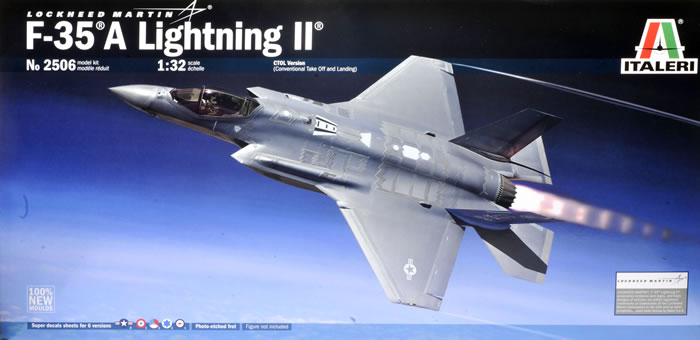
Italeri, 1/32 scale
S
u m m a r y |
| Catalogue Number: |
Italeri Kit No. 2506 - Lockheed Martin F-35A Lightning II |
| Scale: |
1/32 |
| Contents and Media: |
274 parts in grey coloured plastic (including 8 marked not for use); nine parts in yellow-tinted clear; 27 photo-etched parts; clear acetate sheet; markings for six aircraft |
| Price: |
TBA |
| Review Type: |
FirstLook |
| Advantages: |
High level of detail; appropriate surface features including stealthy RAM areas; full engine included; photo-etched parts for seat harness straps; canopy may be posed open or closed; clever use of masks and decals to depict the distinctive saw-toothed edges of the thicker F-35 RAM; high quality decals for six options. |
| Disadvantages: |
|
| Conclusion: |
Italeri has been quick off the mark with their 1/32 scale F-35A Lightning II. Detail is very good, the equipment bays are busy (including ordnance), and the RAM panel contrast will lend interest to the grey scheme.
This will be a large impressive replica when complete.
Highly Recommended. |
Reviewed by Brett Green

Eduard's 1/48 scale SE.5a ProfiPACK will be available online from Squadron.com
F-35 History and Development
The Lockheed Martin F-35 Lightning II is a family of single-seat, single-engine, all-weather stealth multirole fighters. The fifth-generation combat aircraft is designed to perform ground attack and air defense missions. It has three main models: the F-35A conventional takeoff and landing (CTOL) variant, the F-35B short take-off and vertical-landing (STOVL) variant, and the F-35C carrier-based Catapult Assisted Take-Off Barrier Arrested Recovery (CATOBAR) variant. On 31 July 2015, the United States Marines declared ready for deployment the first squadron of F-35B fighters after intensive testing. On 2 August 2016, the U.S. Air Force declared its first squadron of F-35A fighters combat-ready.
The F-35 descends from the X-35, the winning design of the Joint Strike Fighter (JSF) program. An aerospace industry team led by Lockheed Martin designed and manufactures it. Other major F-35 industry partners include Northrop Grumman, Pratt & Whitney and BAE Systems. The F-35 first flew on 15 December 2006. The United States plans to buy 2,457 aircraft. Its variants are to provide the bulk of the crewed tactical airpower of the U.S. Air Force, Navy and the Marine Corps over the coming decades. Deliveries of the F-35 for the U.S. military are scheduled until 2037 with a projected service life up to 2070.
The United States principally funds the F-35 JSF development, with additional funding from partners. The partner nations are either NATO members or close U.S. allies. The United Kingdom, Italy, Australia, Canada, Norway, Denmark, the Netherlands, and Turkey are part of the active development program; several additional countries have ordered, or are considering ordering, the F-35.
The program is the most expensive military weapons system in history, and has been much criticized inside and outside government, in the U.S. and in allied countries. Critics argue that the plane is "plagued with design flaws," with many blaming the procurement process in which Lockheed was allowed "to design, test, and produce the F-35 all at the same time, instead of… [identifying and fixing] defects before firing up its production line." By 2014, the program was "$163 billion over budget [and] seven years behind schedule." Critics also contend that the program's high sunk costs and political momentum make it "too big to kill.".
F-35A
The F-35A is the conventional takeoff and landing (CTOL) variant intended for the U.S. Air Force and other air forces. It is the smallest, lightest F-35 version and is the only variant equipped with an internal cannon, the GAU-22/A. This 25 mm cannon is a development of the GAU-12 carried by the USMC's AV-8B Harrier II. It is designed for increased effectiveness against ground targets compared to the 20 mm M61 Vulcan cannon carried by other USAF fighters.
The F-35A is expected to match the F-16 in maneuverability and instantaneous high-g performance, and outperform it in stealth, payload, range on internal fuel, avionics, operational effectiveness, supportability, and survivability. It is expected to match an F-16 that is carrying the usual external fuel tank in acceleration performance.
The A variant is primarily intended to replace the USAF's F-16 Fighting Falcon. At one point it was also intended to replace the A-10 Thunderbolt II starting in 2028. The F-35A can be outfitted to receive fuel via either of the two main aerial refueling methods; this was a consideration in the Canadian procurement and a deciding factor for the Japanese purchase. On 18 December 2013, the Netherlands became the second partner country to operate the F-35A, when Maj. Laurens J.W. Vijge of the Royal Netherlands Air Force took off from Eglin Air Force Base.
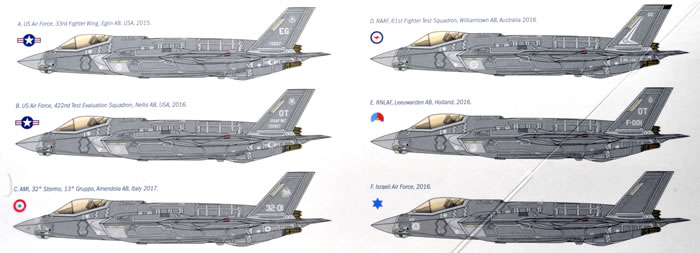
On 27 January 2014, General Mike Hostage, head of Air Combat Command, stated he would fight "to the death" to not have a single plane of the USAF's planned 1,763 F-35 purchase be cut, because the allies and partners of the US got "weak in the knees" when seeing the USAF "back away" from the F-35. He said the F-15 and F-16 fleets would become tactically obsolete in the middle of the next decade regardless of improvements. Hostage also commented that the F-35 would be "irrelevant" without the F-22 fleet being viable as the F-35 was not an air superiority fighter,[529] and that an F-35 pilot who enters a dogfight has made a mistake.
The F-35As for the Royal Norwegian Air Force will have drag chute installed. Norway will be the first country to adopt the drag chute pod.
On 2 August 2016, the U.S. Air Force declared the F-35A basic combat ready. The 34th Fighter Squadron located at Hill Air Force Base, Utah, has at least 12 combat-ready jets capable of global deployment. F-35A is scheduled to be full combat ready in 2017 with its 3F software upgrade. Air Combat Command will initially deploy F-35A to Red Flag exercises and as a "theater security package" to Europe and the Asia-Pacific. It will probably not be fighting the Islamic State in the Middle East earlier than 2017, but ACC commander General Herbert "Hawk" Carlisle wouldn't mind deploying them earlier
*Historical summary adapted from Wikipedia
Italeri has wasted no time in releasing the first production version of the Lightning II, the F-35A, which is just rolling off the production lines and entering service now.
Italeri's 1/32 scale F-35A comprises 274 parts in grey coloured plastic (including 8 marked not for use), nine parts in yellow-tinted clear, 27 photo-etched parts, a small clear acetate sheet; and markings for six aircraft.
Moulding quality is good, with only a small number of ejector pin circles on the inner surface of some parts that will need attention before assembly.
I particularly like the Radar Absorbing Material areas (RAM), represented as raised zig-zags and strips on the surface of the model.

These are raised on the real aircraft too, and are finished in a slightly different shade of grey. In order to help the modeller represent this effect accurately, Italeri supplies a set of self-adhesive vinyl masks in the shape of the various RAM outlines. Decals are included for some of the different coloured panels too.
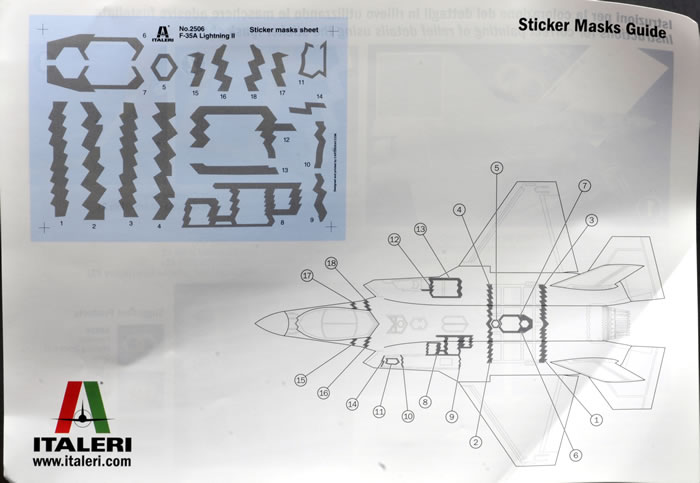
The fuselage is broken down into upper and lower halves. The lower half is peppered with openings for the landing gear and the big ordnance bays. These are all crisply moulded with deep detail, ad should look great with some restrained weathering. The various hinges and rams for the doors look quite impressive themselves. However, all undercarriage and ordnance doors may be closed if you prefer. The small vent doors on the top of the fuselage are separate parts that may be posed open or closed too.
The cockpit of the real F-35A is quite clean and simple, and Italeri's front office reflects this. A decal is supplied for the wide screen instrument panel display, and a clear piece of die-cut acetate is also included as the front of the screen - a nice touch. Most of the side console detail is moulded to the tub, but the throttle and rudder bar are separate pieces.
Photo-etched coaming is supplied for the open canopy option.
The one-piece canopy is moulded in yellow-tinted clear plastic and may be posed open or closed, with a stout plastic and photo-etch hinge assembly provided for the open option. Frame detail is moulded to the inside of the canopy.
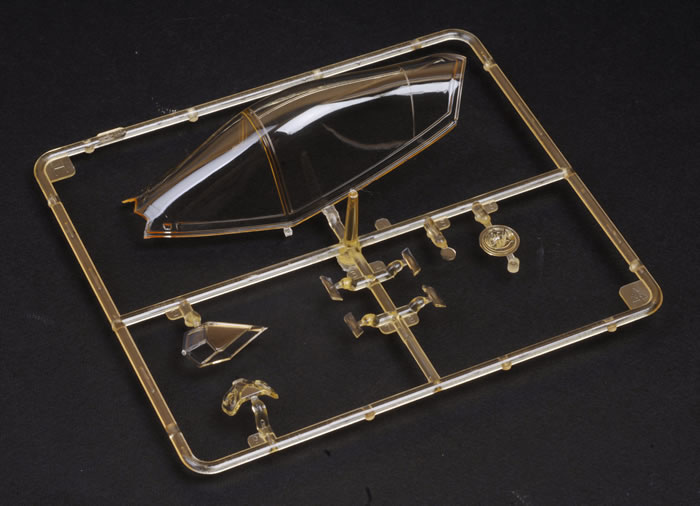
The pilot's ladder and hatch are also supplied as options.
The seat is nicely done, with crisp detail on the sides and rear plus photo-etched harness straps.
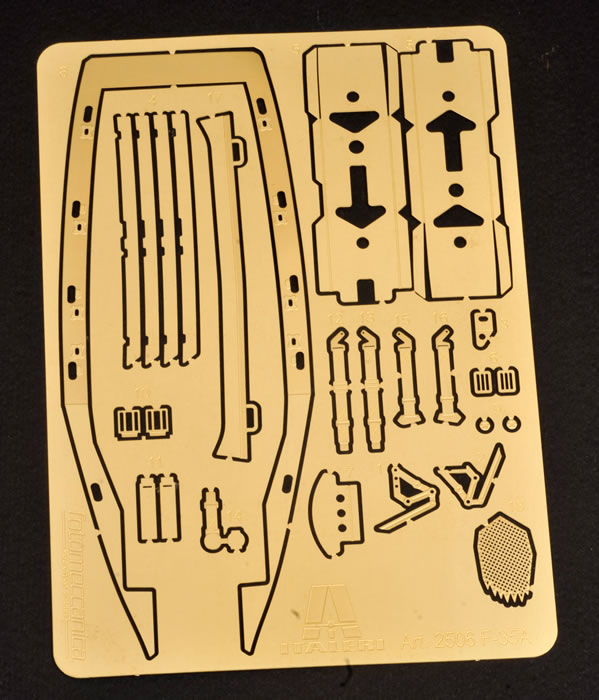
Full-length instake ducting and a complete engine are also included. Depending on which hatches are open, you will catch glimpses of the engine inside the finished model.
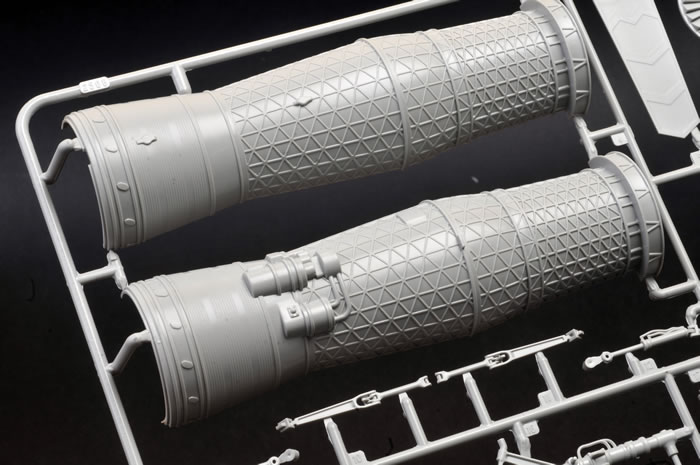
The exhaust nozzle and flame holder assembly looks great.
Undercarriage legs are stout and feature hydraulic cables moulded in place. All the wheels are supplied in plastic (not vinyl - hooray!), and are bulged and flattened.
Control surfaces are separate and optional wing pylons are offered for the USAF and Italian versions.
Ordnance is supplied in the form of two AIM-120C AMRAAM missiles,
two AIM-9X Sidewinder missiles and two GBU-31 JDAM 2,000 lb bombs.
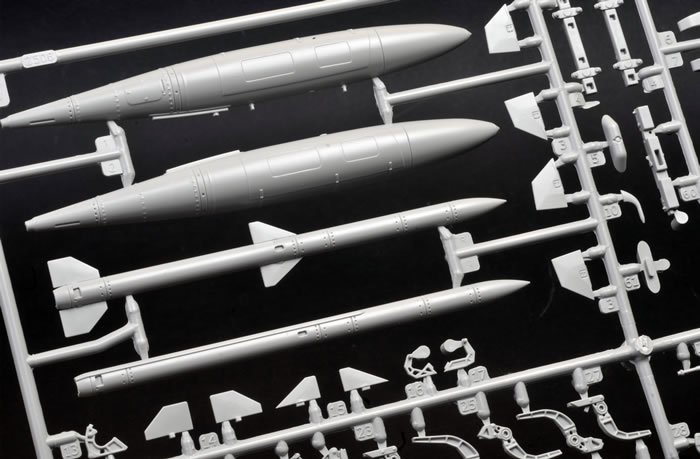
Instructions are called out across 45 clearly illustrated steps. Diagrams are also included for the three weapons configurations and a guide for the RAM painting masks.
Markings
Markings are supplied for six F-35As:
-
Two USAF
-
One Italian AMI
-
One RAAF
-
One RNLAF
-
One Israeli Air Force.
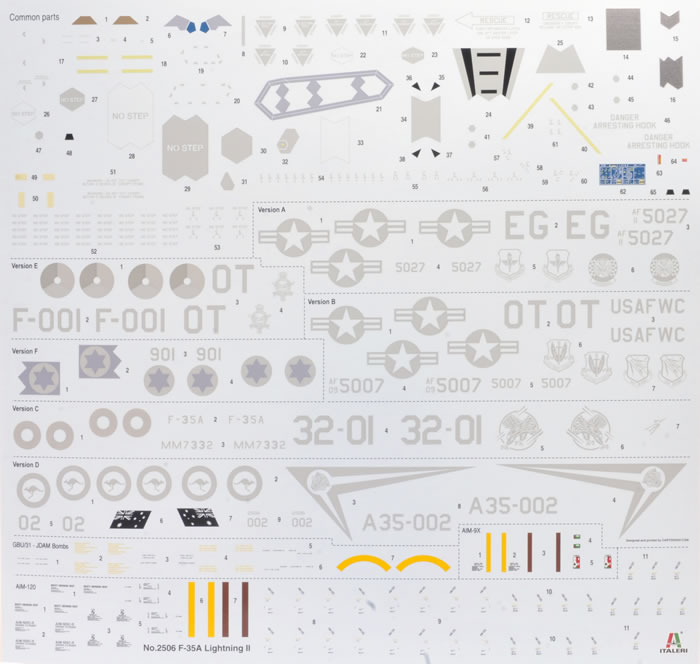
The large colourful decal sheet is perfectly printed by Cartograf.
Printing, colours and registration is perfect on my sample.
Italeri has been quick off the mark with their 1/32 scale F-35A Lightning II. Detail is very good, the equipment bays are busy (including ordnance), and the RAM panel contrast will lend interest to the grey scheme.
This will be a large impressive replica when complete.
Highly Recommended.
Thanks to Italeri for the sample
Review Text Copyright © 2017 by
Brett Green
Page Created 21 March, 2017
Last updated
22 March, 2017
Back to HyperScale Main Page
Back to Reviews Page |
